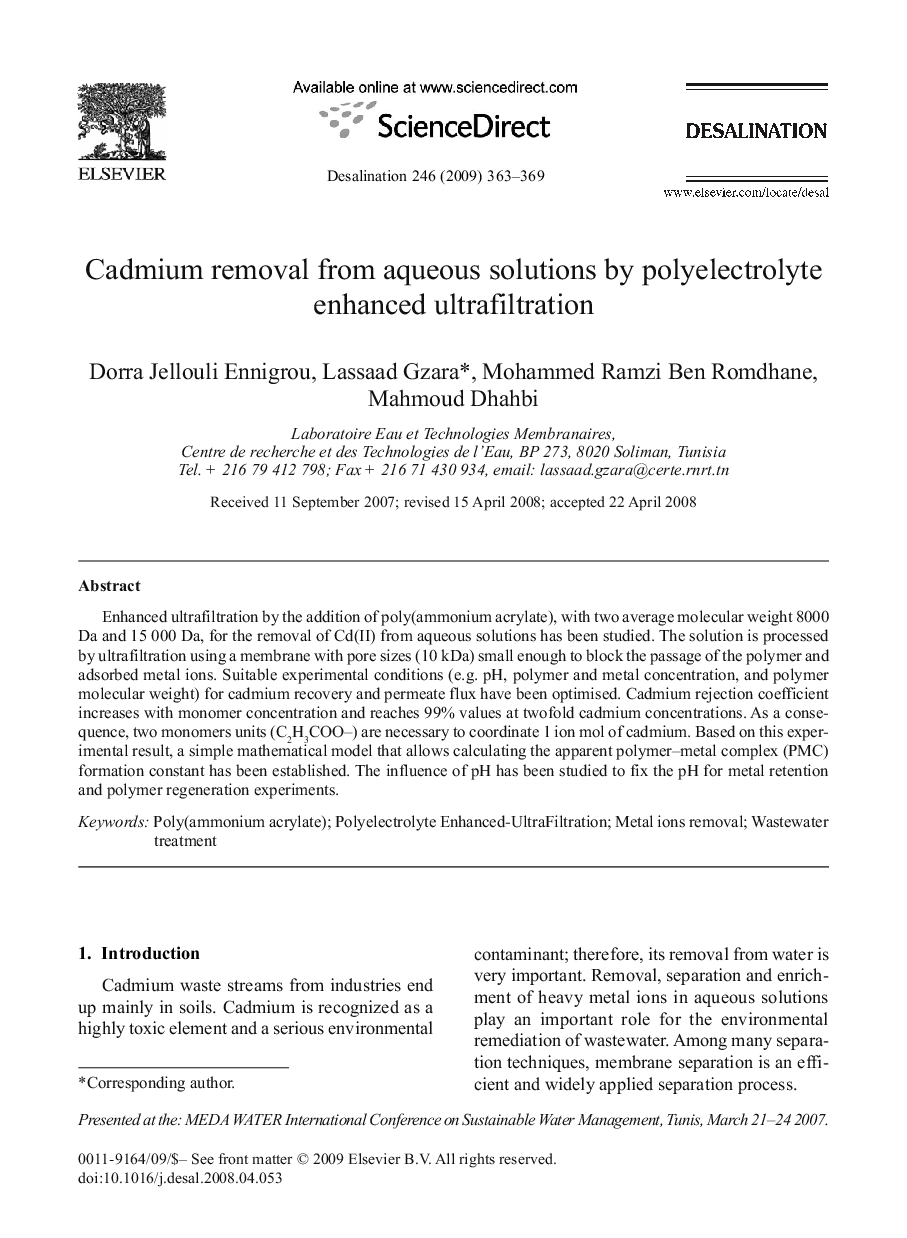| Article ID | Journal | Published Year | Pages | File Type |
|---|---|---|---|---|
| 626668 | Desalination | 2009 | 7 Pages |
Enhanced ultrafiltration by the addition of poly(ammonium acrylate), with two average molecular weight 8000 Da and 15 000 Da, for the removal of Cd(II) from aqueous solutions has been studied. The solution is processed by ultrafiltration using a membrane with pore sizes (10 kDa) small enough to block the passage of the polymer and adsorbed metal ions. Suitable experimental conditions (e.g. pH, polymer and metal concentration, and polymer molecular weight) for cadmium recovery and permeate flux have been optimised. Cadmium rejection coefficient increases with monomer concentration and reaches 99% values at twofold cadmium concentrations. As a consequence, two monomers units (C2H3COO–) are necessary to coordinate 1 ion mol of cadmium. Based on this experimental result, a simple mathematical model that allows calculating the apparent polymer–metal complex (PMC) formation constant has been established. The influence of pH has been studied to fix the pH for metal retention and polymer regeneration experiments.
